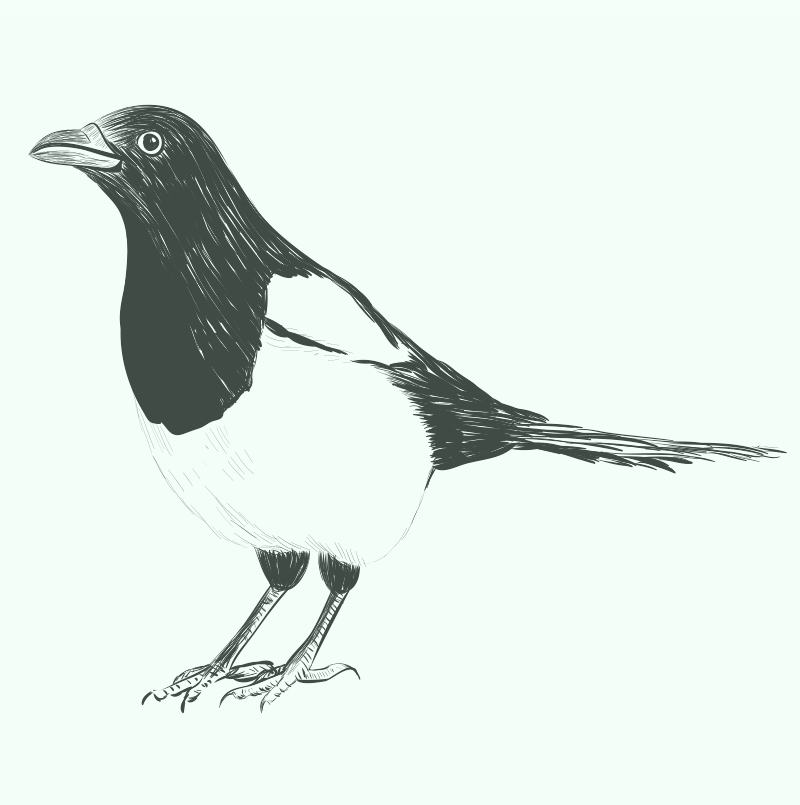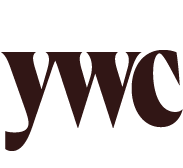The magpie collects
I'm a firm believer that powerful ideas emerge from diverse influences being smashed together. How can a truly inspirational idea develop from a homogeneous group of people gathered in the same meeting room, using the same photo libraries and search engines? Or as Albert Einstein so succinctly put it: The definition of insanity is doing the same thing over and over and expecting different results. I steal concepts, language, news snippets, visual references and clever analysis from everywhere. Being out-and-about as an independent consultant gives you the opportunity every day to take fresh information in and apply it to projects.

I asked a few people this question today – if you had to pay for TikTok, Insta, X etc with a monthly subscription fee, would you do it? Invariably the answer was no. Perhaps inevitably so, because who doesn’t like a freebie?
Then when I asked, if there isn’t anything on these platforms you consider to be worth paying for, why are you on them? There was usually a pause, perhaps a shrug, then a listing of a few minor benefits.
Sunday. Caught up on back issues of The New European and stopped on an article by journalist and author @GaryNunn. He was reflecting on being a social mobility experiment and how he and Wes Streeting, Secretary of State for Health and Social Care, both experienced what university was like via a Sutton Trust Summer School.
I’m a sucker for a bright colour combination, leaving me less than enthused about Pantone’s colour of the year for 2025, an “evocative soft brown” they’re calling Mocha Mousse. I think they should drop an ‘s’ and call it Mocha Mouse.
The colours in the screen grab here are from Samia Halaby’s kinetic painting Spooling Up (1988) featured at Tate Modern’s Electric Dreams exhibition. The other brightly coloured painting that immediately drew me in was in the opening room: Work, by Japanese artist Atsuko Tanaka, reproduced for this Tate art print here.
Overall, Electric Dreams: Art and Technology Before the Internet made me feel nostalgic, longing for a past era when experimentation felt innocent and original. For all the power of technology today things are feeling generic, even perhaps, a little Mocha Mouse…Mousse sorry.
Is the trend to passive and held back because there’s so much uncertainty around?
On looking both artists up I was happy to discover that they were women working their magic with colour. Etel Adnan is another woman artist I love who produces incredible colours and works with them in brilliant ways.
This caught my eye, research by brand agency JKR on Brand Britain, covered by Creative Review. The headline asked, what does Britishness mean to brands now? I assumed very little, as did JKR prior to the research, but there is apparently reason for some optimism – if you’re a glass half full kind of person. We’re basically split 50-50 as a country (no news there), in our opinions of whether Britain is a force for good in the world, whether we’d choose to be a citizen of here or anywhere else, and whether we feel positive about the country.
Halfway through my first Masterclass ‘Achieve more with Gen AI’ with Ethan Mollick and Allie K. Miller, I was struck by this statement from Miller: restrictions boost creativity. She was saying the tighter the restrictions the better the outputs from Gen AI; that putting things in a box makes GenAI more creative. The same can 100% be said of creative teams, who need to know what box they’re in, to push the boundaries and get out of it. This all reminded me of an exhibition I organised a few years back with artist and designer Zoltan Marfy. It’s title was One Word Brief. Graphic designers, photographers and artists anywhere could select a One Word Brief from the options we provided and develop a response. We thought this kind of open brief would them to demonstrate their talent at full pelt. The reality was lots of people struggled and most responses were lack lustre. The better responses were from people who added restrictions to the brief – they took the One Word Brief and put it in a box of their own.
So this is the guy you’d prefer to have 211.4 million followers on X and sending their advice to the UK – Rutger Bregman, historian, author and co-founder of The School for Moral Ambition. He’s a guy who’s optimistic about human potential and wants to tempt talented people away from b*llshit jobs to make the world a better place, by taking on the biggest problems of our time. The reason I believe he might just do it is examples I’ve seen of his fearless but subtle undermining of those who spout negativity and seek division. He challenges not with acerbic words or anger but with facts, humour, steadfastness and transparency, and a sense, I suspect, that those he opposes are just a bit silly. Ambitious idealists like him, should discover more about The School for Moral Ambition at rutgerbregman.com/sma, where you’re invited to take the step towards a career with positive impact.
There’s been an interesting thread on LinkedIn recently about sharing interview questions in advance of interviews. In principle I really like this, for inclusivity reasons in particular. But there’s an underlying assumption that interview questions either shared beforehand or asked in the meeting are good! Often questions are dry and generic, immediately diminishing the draw of a role and a company, and not giving the candidate anything to chew on, or the space and freedom to show their metal.
Call me sentimental, cheesy, naïve or a dumb broad (actually not that), but when the world gets really heavy, I return to The West Wing. Any season from 1-4 will do. Who doesn’t feel reassured by a Toby Ziegler and Sam Seaborn speech in the midst of complex geopolitics, national tragedy or new policy that will lift people out of poverty and provide everyone with equal opportunity.
“In computer science, garbage in, garbage out (GIGO) is the concept that flawed, or nonsense (garbage) input data produces nonsense output.”
The same goes for any kind of input or briefing. If you don’t provide a decent brief, you only get decent creativity back if the someone(s) on the receiving end bother to challenge it, rethink it, push the boundaries a bit – or a lot – and tell you you’ve got it wrong.
Where does this leave us with briefing the machines I wonder? I’m going to find out with Midjourney, the San Francisco founded, generative AI research lab.
I’m all for great career advice. I’m not sure I received any at school or university. I didn’t know what the university milk round was so didn’t turn up and my career may have ended up differently if I had. So that was a bit of social capital I missed out on.
In a small sample of just me, my friends, my family and colleagues, there is a backlash underway against being absolutely freakin frenetic all the bloomin’ time.
Anand Sanwal from CB Insights (I almost always read his emails) shared an email Musk sent to the Tesla team. Fingers crossed, as Sanwal said, that this isn’t urban legend, as it’s the only thing I’ve ever nodded to positively that’s emanated from Musk.
When Terry Smith, CEO of Fundsmith, expressed his scepticism about the stated purpose of Hellman’s (to tackle global food waste) and of Lux (inspiring women to rise above everyday sexist judgements and express their beauty and femininity unapologetically), I did get his point. He had his reasons for challenging Unilever, but he also drew attention to what’s been happening far too casually in branding for the last 5+ years.
This episode on the future of work, from the Weekly Economics Podcast, is a must listen for anyone involved in capturing business cultures with words or aiming to direct them with the creation of purpose and values statements.
One of my favourite “little books of” is Taxi Driver Wisdom by Risa Mickenberg, a series of quotes taken from conversations with New York City cab drivers. It contains page after page of classic real-world wisdom, though not all of it you want to hear!
I need to thank Caoilfhionn O’Connor, creative director at Likely Heroes, for pointing me in the direction of The Selby Films. Even those more obviously for brands are a masterclass in how to capture people’s stories without going overboard in selling an angle on them.
Why hasn’t this been done before? Gender Swapped Fairy Tales, by illustrator and author Karrie Fransman and creative technologist Jonathan Plackett, is such a simple but brilliant idea. But harder to execute than first thought apparently.
I kept the September 2018 issue of Elle magazine because it was dedicated to sustainability. It’s typically the biggest issue of the year and it was Elle’s first with 100% recycled-waste paper. That was just the first indicator of what felt like a major change in stance by the publication. Not just fashion conscious but conscious fashion. I liked what I was reading and it’s true to say across the many magazines I enjoy reading (old skool, I know), sustainability – in all its forms – has risen up the agenda. Phew.
I really enjoyed this introduction to designer Yinka Ilori in Observer Design. A bit of an abstract painter in my spare time, I favour an acidic bright colour palette and have aborted umpteen attempts to stick with a cooler, more sedate one.
The works of art created for this challenge have to be my favourite of the pandemic. I keep on going back to them to marvel at the ingenuity, with people using only materials (and pets and people!) they had in their homes.
Positivity and proactivity are the things that have caught my eye most during the pandemic. You could call it clear purpose. First out of the blocks was 2.6 Challenge a new charity brand that very quickly established itself after the UK lockdown was announced.
This Squarespace campaign really resonated with me. A so-simple headline carrying an amazing amount of meaning and emotion.
Really liked this intro to an exhibition of costumes at the National Theatre, London (really liked the costumes too)...
The campaign message “Steal our staff” from soap maker Beco is immediately arresting. But the story behind it is even better.
The simplicity of The Guardian’s Hope is Power video is haunting. It’s part of a hard-hitting campaign that’s captured my attention online and outdoors.
As a dabbler in the creation of sometimes large abstract paintings, it tickled me to see that Large Expensive Abstract is the title of one of Grayson Perry’s works in his latest exhibition Super Rich Interior Decoration, at the Victoria Miro Gallery, Mayfair.
Hats off to Not Flat 3 for trying to do something about homogeneity in the design industry. I hope their Design Can manifesto gains support because as an industry we’re one of the worst for hiring in our own image. Not diverse at all.
For those of us who’ve been talking and writing about responsible business and sustainability for 25+ years – not to mention the environmentalists who’ve been going at it since the Seventies – the one question we have for mainstream politicians, now putting climate change centre stage, is What The Hell Took You So Long?
I only caught the tail end of a news story quoting Jeff Bezos on AI, but I was immediately struck by his description of artificial intelligence in Amazon warehouses: a beautiful symphony of people and machines.
“Sorry, I haven’t got any cash” used to be the line you dropped to avoid paying a tip or putting money in the charity pot, but as we move ever-faster towards a cashless society, that statement is becoming much less of a blag.
I’ve never seen this before, a big wig company promoting their new corporate identity on their home page. Not just by using it, but by linking you to a dedicated web page that showcases the design and hosts a lush video promoting all its virtues.
Abundance Investment is my latest brand on the block to follow. They piqued my interest with an ad on the Tube, surely the only place where ads work anymore (on me at least).
These few words from Tim Stanley, journalist and historian, explain the power of words perfectly
I can’t claim to have read the whole book [yet] but I’ve picked up some damn useful ideas and turns of phrase from “New Power” by Jeremy Heimans and Henry Timms, thanks to that handy little app Blinkist that does the big read for you.
Juliet Docherty’s colour workshop 1 was a revelation. Being an abstract artist on the side with training limited to ‘O’ level, I’ve been using colours intuitively and ready mixed. Of course, I’d always heard you could mix an infinite amount of colours from the primaries but having hot and cold primaries, creating violet, and having white on the side to impact on tone, offered so many insights on how great painters paint.
David Goodhart’s ‘The Road to Somewhere’ is a brilliant articulation of the ultimate dividing line between people in the UK today. It goes a long way to explain why the EU referendum went the way it did.
I recently did some work investigating private members’ clubs, which are no longer the preserve of gentlemen of a certain rank, wealth and profession, but a choice many more people are making to enhance their work/life style.
Look out for Deconomics, a new form of economics which puts the good life centre stage and looks more like psychology, sociology or anthropology than today's arid economics.
‘The many (marketable) faces of Frida Kahlo’ by Miranda France in Prospect (May 2018) made me stop and think about what I project onto this artist
Always a sucker for an artist's home, Kettle's Yard in Cambridge, the home of a collector, was bliss.
From Hope to Nope at the Design Museum is a fast track journey through the complex history of the last 10 years. It made me proud of the protest but crazed at how much has been needed in such a short space of time.
Who wouldn't like this concept: Strategic Slacking?! Picked it up in an article discussing why people get their best ideas in the shower
Thumbs up to chief economist, Andy Haldane, at the Bank of England, who looks for inspiration everywhere.
I got fed up like most people with the stream of GDPR driven emails by anyone I’d ever bought anything from. I read the first few, did the right thing checking their terms, and then went passive.
It's amazing what you see at a Tate Late. Thought provoking and inspirational in so many ways.















































